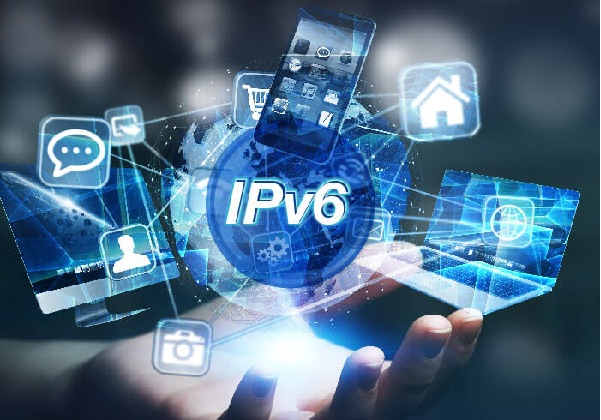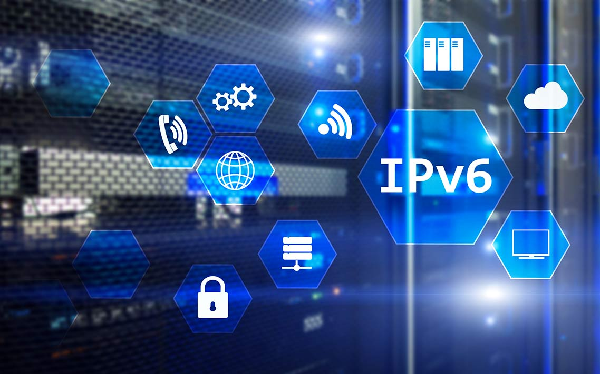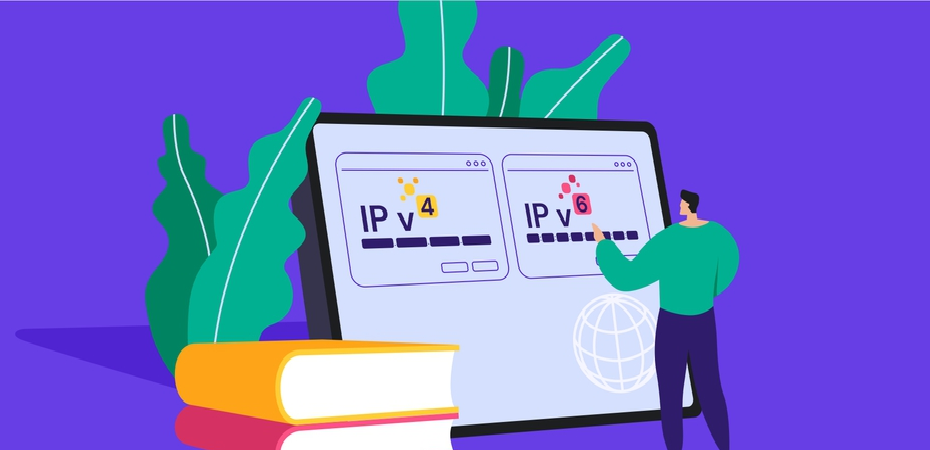Have you ever wondered about the IP address assigned to you by your ISP? Where has it been generated, or how has it been distributed among the users?
This article will clarify the understanding behind IP address generation and distribution. To understand the overall workflow, first, you will need to understand two terminologies, IPv4 and IPv6. So what is the difference between IPv4 vs. IPv6?
Let’s get acquainted with a better understanding of these protocols.
What is IPv4?

Internet Protocol version 4 (IPv4) is a technology that allows devices to connect to the internet. Whenever devices access the internet, it is assigned a particular IP address, such as 99.87.542.223.
To send and receive data from one computer to the other, the network uses data packets that are transferred across the network of both devices.
Without IP addresses, computers cannot communicate and send and receive data from one another. It is an essential aspect of the infrastructure of the web.
What is IPv6?

IPv6 stands for Internet Protocol version 6. It is a successor to IPv4. The functionality of IPv6 and IPv4 are more or less similar; however, the latest successor has a few added benefits and changes. Both the internet protocols share the same grounds in giving a unique IP address and enabling internet devices to communicate with one another. However, they differ in many aspects; one is that IPv6 uses 128bit, while IPv4 uses 32bit.
Are IPv4 Addresses Depleting?
As mentioned above, IPv4 uses 32bits for internet addresses, which can only support around 4.29 billion IP addresses. The number in billions does sound many, but they are assigned to different institutions, leading to today’s crisis.
Let’s be more specific; we haven’t run out of addresses just as yet. Many IP Addresses are still unused and under the hands of institutions like MIT and companies like IBM and Ford. Since IPv4 are a scarce source, they are now only traded and sold, and in years to come, they will become further scarce and might create problems for the web.
Does IPv6 Solve this Problem?
A: Since IPv6 uses 128-bit IP addresses so it can support 330,282,366,929,938,000,000,000,000,000,000,000,000 internet addresses.
There are a lot of addresses, so many that it requires a hexadecimal system to display the addresses. IPv6 thus solves the problem which IPv4 couldn’t handle in such a way that it can keep the internet devices connected with the web for a long time.
Have You Switched to IPv6 Already?
It was predicted years ago that IPv4 addresses would deplete in the coming years, and a struggle was in the process to make an alternative. However, the progress has been little, and only a tiny fraction of the web ash switched to the new protocol. IPv4 and IPv6 also act as parallel networks and exchange the data between these protocols. To make these two protocols work together, software and routers need advanced network configurations.
Another reason IPv4 has been replaced by IPv6 IP address is the vulnerability attached with IPv4. In most cases, breaches happen because the IP address is leaked on the open internet, especially when connected with a VPN. Easy steps allow you to quickly check if your IP leaks while connected with a VPN.
Will it affect you?
Initially, the switch towards IPv6 won’t affect your life since most operating systems are compatible. However, IPv6 has been reported to have many bugs that can be a mess; gladly, experts are working on it.
Let’s talk about their features!
Features of IPv4

Ipv4 has the following features;
- Consumes less memory
- Ease of remembering
- Supported by millions of devices.
- Allows a simple communication layer over diversified devices.
Features of IPv6
IPv6 has the following features;
- Stateless configurations.
- Perfect internet protocol for neighboring node interaction
- Hierarchy addressing
- Routing infrastructure
- Support for QoS (Quality of Service)
IPv4 vs. IPv6 Comparison
| Features | IPv4 | IPv6 |
| Address Length | Has address length of 32-bit | Has address length of 128-bit. |
| Security | IPv4 security depends on the application. | IPv6 depends on IPSec, which is an inbuilt security feature. |
| Address Representation | Address representation is in decimal. | Address representation is in hexadecimal. |
| Transmission Scheme | It has a broadcast message transmission scheme that is very different from IPv6. | It offers multicast and has cast message transmission. |
| Encryption | An authentication and encryption facility is not available. | Authentication is available. |
| Routing Information Protocol | Supported by Routed Daemon | Not supported on IPv6 and uses static routes. |
| Type of Address | Unicast, Broadcast, and multicast | Unicast, multicast, and anycast |
| Number of classes | Offers five different classes of IP addresses. Class A to E | Stores unlimited IP Address |
| Packet flow Identification | In IPv4 Packet flow identification is not available | IPv6 uses packet flow identification and also uses field labels in the header. |
| Packet Size | 576 bytes are required and fragmentation is optional | 1208 bytes required no fragmentation. |
| DNS Records | Address (A) records and maps hostnames | Address (AAAA) records and maps hostnames |
| IPSec (Internet Protocol Security) | Optional | Mandatory |
| Mapping | Uses ARP (Address Resolution Protocol) for Mac Address | Uses NDP (Neighbor Resolution Protocol) for Mac Address |
| Compatibility Across Devices | Not suitable for mobile networks because it uses dot-decimal notation. | Best suited to mobile and other platforms because of its hexadecimal and colon-separated notation. |
Benefits of IPv6

People quarreled over internet protocols, but little do they know that IPv6 and IPv4 have different benefits.
The IPv6 technology is an improved version of IPv4; let’s look at what it brings.
- Simplified and more efficient routing
- Auto-Configuration
- No more Network Address Translation
- Flexible extensions and options
- Built-in authentication for privacy support
- Better multicast routing
- No more private address collisions
The IPv6 technology is an improved version of IPv4; let’s look at what it brings.
- Simplified and more efficient routing
- Auto-Configuration
- No more Network Address Translation
- Flexible extensions and options
- Built-in authentication for privacy support
- Better multicast routing
- No more private address collisions
The IPv6 technology is an improved version of IPv4; let’s look at what it brings.
- Simplified and more efficient routing
- Auto-Configuration
- No more Network Address Translation
- Flexible extensions and options
- Built-in authentication for privacy support
- Better multicast routing
- No more private address collisions
- Say goodbye to DHCP; IPv6 has a simpler administration
How to Enable or Disable IPv6 on MacOS?
- Click the Apple icon and go to system preferences
- Click Network and select advanced
- Select the TCP/IP tab
- Click next and configure IPv6
- Select your preferred settings, and you’re good to go.
Conclusion
You must rely on IPv6 as it is a newer, much more advanced, and better technology.
But hold on!
If it is better than IPv4 then why not use it by default?
There are a few issues with IPv6, but we hope to have them sorted. Although one ache for VPN users is that many VPN providers do not offer IPv6 leak protection yet, either they have to switch to the previous version (IPv4), or they have to opt for a different VPN provider that offers protection against IPv6 leaks.
Read also:



